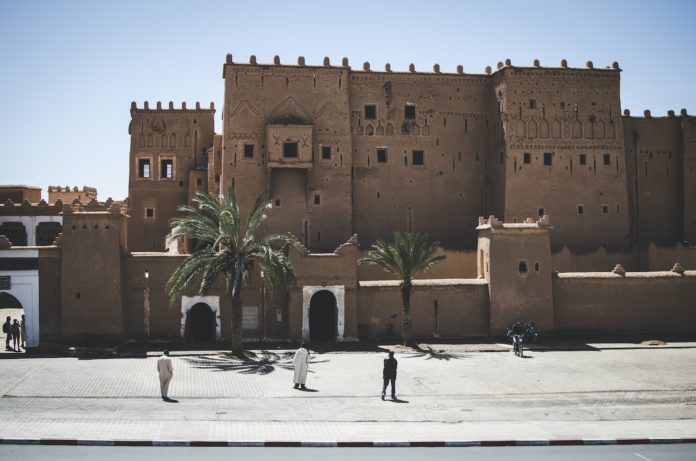Morocco’s allure is a captivating blend of ancient cities, dramatic landscapes, and tales as old as time. This North African nation, known for its vast deserts and bustling marketplaces, also houses cities that have borne witness to centuries of civilization, conquests, and culture. Rabat, Fez, Marrakech, and Ouarzazate – each city, whether it once was a seat of the Moroccan kingdom or a cinematic backdrop, holds a unique tale waiting to be discovered. As we take you on this enthralling journey, prepare to be enchanted by the blend of history, culture, architecture, and the sheer cinematic magic of these iconic destinations. Join us, as we traverse through winding alleys, royal palaces, desert landscapes, and movie sets, unveiling the diverse mosaic that is Morocco.
1. Rabat: The Current Capital With A Mélange Of Modernity And Tradition
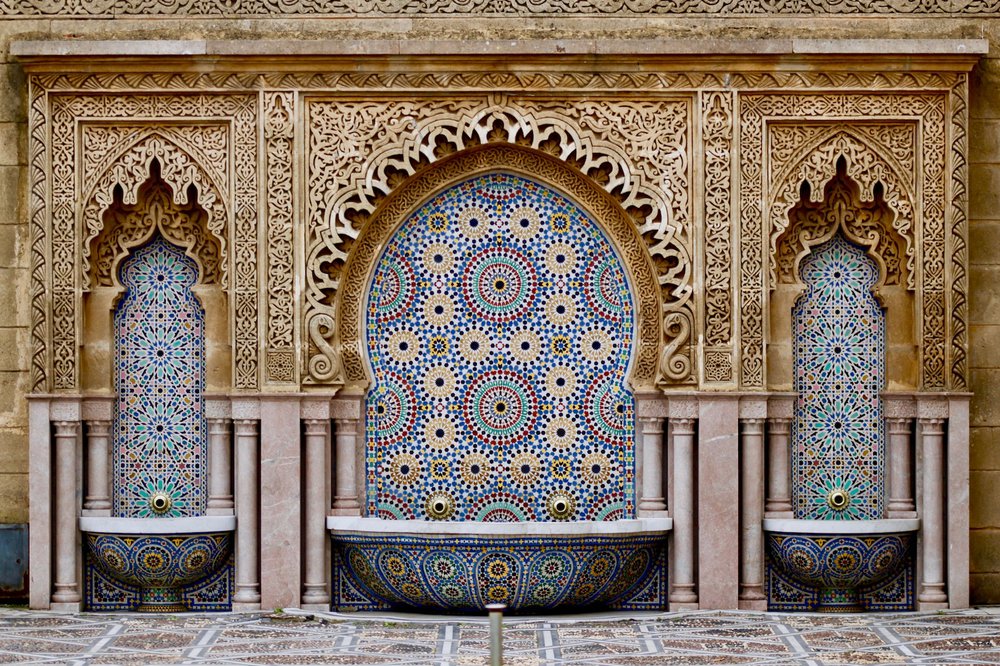
Casablanca might be recognized internationally because of its cinematic history and business appeal, but it’s Rabat that holds the title of the nation’s political nucleus. A fascinating fusion of its French colonial history and traditional Moroccan architecture makes Rabat uniquely captivating.
The broad avenues flanked by lush trees, artistic buildings reflecting art deco influences, and the systematic urban planning are reminiscent of its time under French governance. These structured layouts provide a stark contrast to the organic growth of other Moroccan cities, which often seem like mazes.
A rising trend among globe trotters and history enthusiasts is the choice of Morocco vacation packages all inclusive. Especially when it comes to Moroccan adventures, these packages typically encompass all three royal cities, allowing travelers to immerse themselves in the best each city has to offer without the worries of planning and logistics.
Rabat isn’t just about modernity, though. Delve deeper, and historical sites such as the Hassan Tower beckon. This unfinished minaret, once intended to be a part of the world’s largest mosque, stands as a testimony to Rabat’s rich past. Opposite this majestic tower, the Mausoleum of Mohammed V, with its stunning mosaics and captivating architectural prowess, pays homage to Moroccan royalty.
2. Fez: A Time Capsule Of Intellectual And Cultural Grandeur
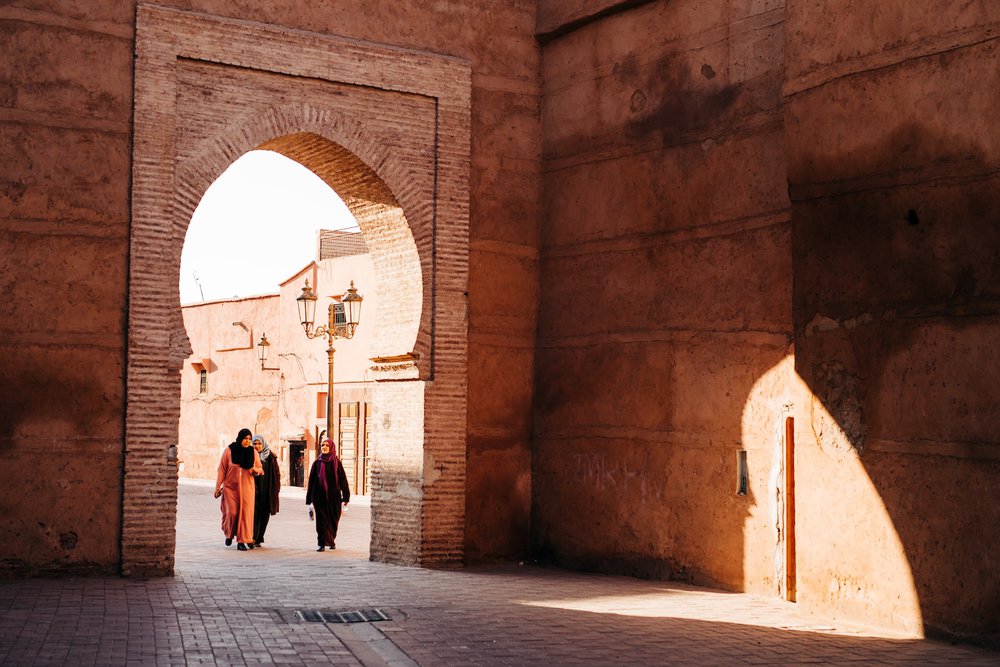
Labeling Fez as merely a cultural or spiritual hub would be an understatement. This city, with its history stretching back over a millennium, is akin to a living museum. Fes el-Bali, the city’s ancient medina, is a UNESCO World Heritage site and offers a tantalizing web of alleys, buzzing marketplaces, and awe-inspiring structures, preserving memories of an era long gone.
The University of Al Quaraouiyine is another jewel in Fez’s crown. Touted as the world’s oldest existing university with continuous operations, it underscores Fez’s significance as a beacon of knowledge since ancient times.
In addition to its academic landmarks, Fez’s traditional industries continue to thrive. One of the most mesmerizing sights is that of the Chouara Tannery. This expansive tannery, with its myriad of dye pits filled with vibrant colors, showcases a craft that has remained largely unchanged for centuries.
3. Marrakech: The Enigmatic Red Oasis
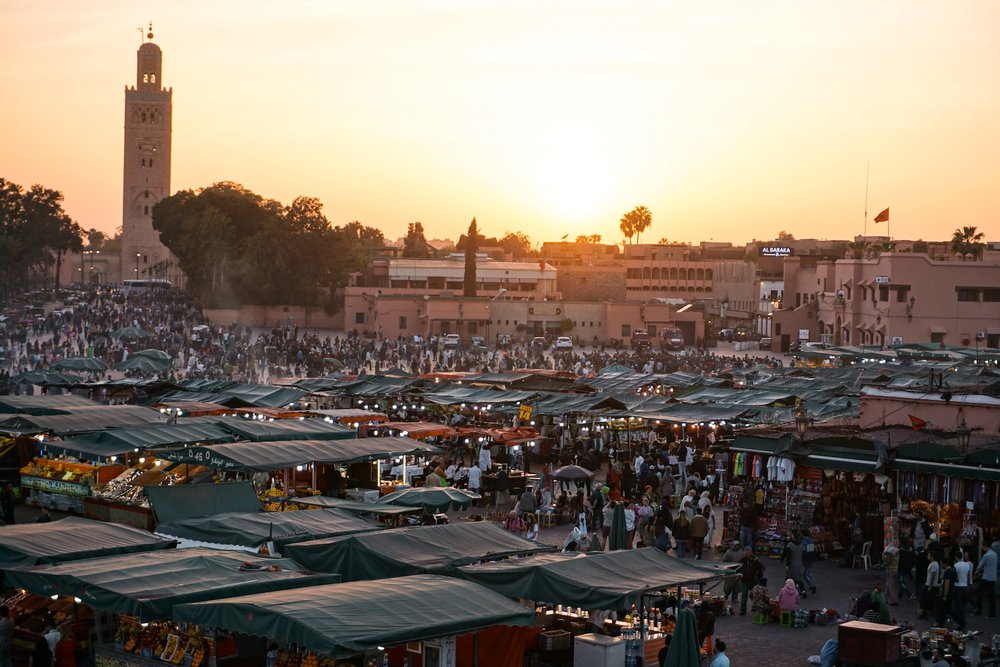
Marrakech, with its buildings glowing in shades of terracotta and rose, offers a sensory overload. The city’s nickname, “Red City”, is a testament to the reddish-pink hue that dominates its skyline. Marrakech is a heady mix of the old world’s charm and the contemporary’s fervor.
No visit to Marrakech is complete without experiencing the pulsating heart of the city, Jemaa el-Fnaa square. As the sun sets, this square comes alive with myriad sights and sounds – from enchanting snake charmers and mesmerizing storytellers to the tantalizing aroma of traditional Moroccan dishes.
Yet, Marrakech isn’t all hustle and bustle. The Majorelle Garden, a botanical masterpiece, offers a tranquil escape from the city’s frenetic pace. Later adopted and restored by Yves Saint Laurent, this garden is a confluence of botany and art.
The Bahia Palace, a symbol of opulence, gives visitors a sneak peek into the lavish lives of Moroccan royalty. As you traverse its corridors, the intricate mosaics, expansive courtyards, and ornate carvings narrate tales of bygone eras. Furthermore, the Mellah or Jewish quarter stands as a testament to the city’s diverse past, where Berber, Arab, and Jewish communities coexisted harmoniously.
4. Ouarzazate: The Desert Jewel And Hollywood Of Africa
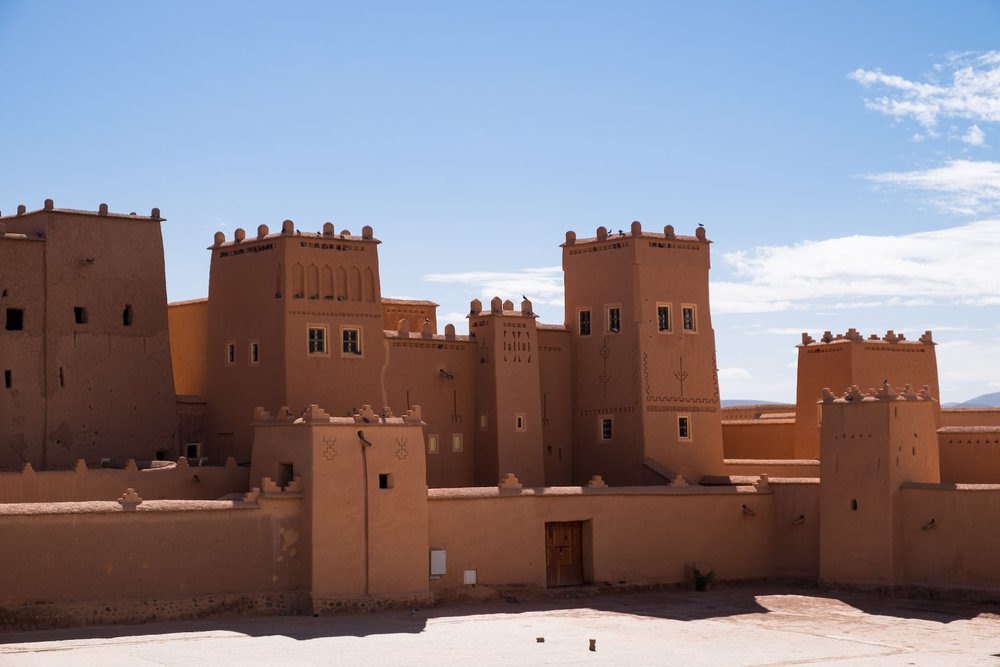
Nestled at the foot of the Atlas Mountains, Ouarzazate often feels like a mirage, rising majestically from the desert. Known as the “Gateway to the Sahara,” this city offers a unique blend of natural beauty, architectural splendors, and cinematic fame.
The first thing that might strike a visitor about Ouarzazate is its tryst with cinema. Serving as a backdrop to iconic films like Lawrence of Arabia, The Mummy, and the acclaimed series Game of Thrones, the region’s dramatic landscapes have made it a favorite among filmmakers. The Atlas Film Studios, located here, is often dubbed the “Hollywood of Africa,” being the world’s largest film studio in terms of land area.
For history enthusiasts, the Kasbahs of Ouarzazate provide a dive into Morocco’s ancient architectural marvels. Taourirt Kasbah, once a strategic stronghold, stands as a testament to the city’s historical importance. With its interconnected houses, grand reception areas, and maze-like layout, it’s a marvel of earth-toned architecture.
Another unmissable sight is the Aït Benhaddou, a fortified village or ksar, which is a UNESCO World Heritage site. The red mud-brick towers against the stark backdrop of the desert and snow-capped mountains create a surreal contrast. As you walk through its gates, the alleys lead you through a tapestry of Moroccan history, showcasing the brilliant architecture, art, and community life of yesteryears.
Beyond history and cinema, Ouarzazate is also the hub of renewable energy in Morocco. The Noor Ouarzazate Solar Complex, the world’s largest concentrated solar power plant, underlines Morocco’s ambitious stride toward sustainable energy solutions.
To Conclude: A Rich Tapestry Of Moroccan Glory
From the rhythmic alleys of Fez and the vibrant squares of Marrakech to the cinematic landscapes of Ouarzazate, Morocco’s cities are more than mere destinations. They are gateways to a land that has, for centuries, been at the crossroads of cultures, civilizations, and stories.
Each city, with its distinct flavor and essence, weaves a tale that beckons travelers to delve deeper and uncover the many layers of Morocco’s rich heritage. Whether you’re a history buff, a nature enthusiast, or a cinephile, the royal capitals and desert jewels of Morocco promise an unforgettable sojourn.
Carol
Information sourced by the author for luxuryactivist.com. All content is copyrighted with no reproduction rights available. Images are for illustration purposes only.
